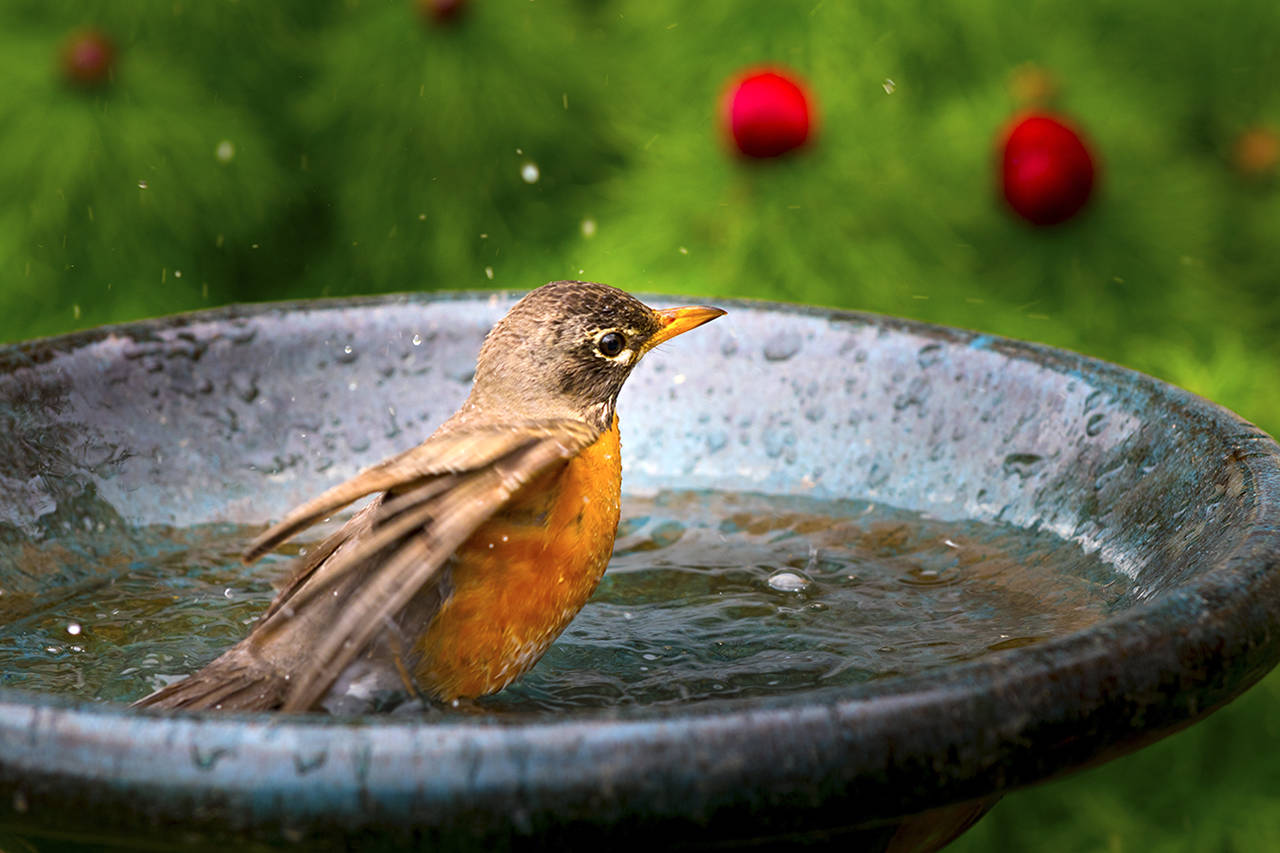By Ann Morris
WSU Master Gardener
A garden with plants that offer color, shade and fruits well into fall and even winter is a wondrous thing. It calms our senses and brings joy to all.
But did you know that you can design your garden to attract wildlife and help them survive? This includes creatures that are very important for pollinating flowers or killing undesirable insects.
As humans, we have gradually destroyed habitat for many animals, degrading much of it through pollution and pesticide use. We should take responsibility for doing our part to encourage wildlife to visit our gardens. (Well, maybe we can exclude the deer.)
What can you do to help? All animals have basic needs to be met: food, water, shelter and space. Depending on the size of your yard and the landscaping you already have, you can start small and expand from there.
Look around at your yard and evaluate what you have already that is beneficial for wildlife. Try to add plants to extend the season for year-round food sources. Also, most flowering herbs attract bees, hummingbirds and butterflies. An additional plus is that many herbs repel mosquitoes.
If you plant sunflowers for their tasty seeds, be sure to leave a few flower heads at summer’s end to dry out to provide nutritious fall snacks for birds. There are many common flowers that provide food for good insects and the birds that feed on them.
Do you enjoy butterflies? Many flowers attract them. Do not forget the monarch butterfly, which is in steep decline due to habitat loss. One problem is that their larvae (caterpillars) feed and lay their eggs only on the milkweed plant. If you tuck in a few with your other flowers, and repeat for several years, you may gradually attract a few monarchs.
If you already feed birds, you may have one or more birdbaths for them. This is very important both summer and winter. A ground-level water source also is good on the ground — whether it’s an actual pond, or something as simple as a large plastic saucer with a rock to anchor it and act as a resting place. This allows water not just for birds, but also for small animals, butterflies (be sure to have that rock just above water level), and even frogs, salamanders and snakes.
We think first of birds and butterflies when we think of inviting wildlife to our gardens; but amphibians, reptiles and even bats are important for garden health. Frogs, salamander, and lizards eat many small insects, worms and slugs. The Western garter snake eats almost anything it can get in its mouth. We do not have poisonous snakes in our area, so do not kill them. At our home, we welcome a group of garter snakes who have taken up residence in the garden.
Bats, which are in serious decline, are major insect eaters: One bat can eat 1,600 mosquitoes a night. The species we have here do not attack humans. They just want to eat and have a warm place to sleep.
How do you attract these often unappreciated animals to your yard? Buy or build a bat house. The type of house and appropriate location for it will be rather specific, so contact an online bat group or the Washington Department of Fish and Wildlife, or look at library books for plans and information. The Fish and Wildlife web page about bats (wdfw.wa.gov/living/bats.html) has extensive information, including the statement that “probably less than 1 percent of the native wild bat population has rabies.”
Reptiles and amphibians prefer low, covered shelter such as crevices in a rock wall, a brush pile or a wood pile. These spots offer shelter, prevent dehydration and moderate their temperature. As with bats, you can get specific information online or at your local library, at the WSU Master Gardener website (www.pnwmg.org), or from many gardening magazines.
* * *
Don’t miss the 20th annual garden tour sponsored by the WSU Master Gardeners of Grays Harbor and Pacific Counties. On July 15, go to the North River/Menlo area in Pacific County to tour five charming gardens between 10 a.m. and 4 p.m. Proceeds benefit the Master Gardeners’ educational outreach to the public.
Ann Morris, an emeritus Master Gardener, lives in Grays Harbor City.


